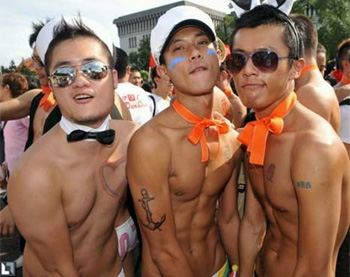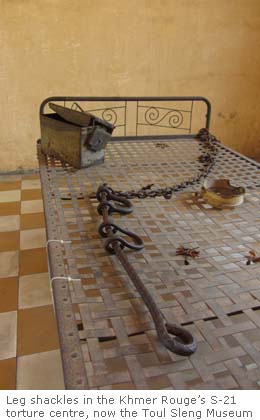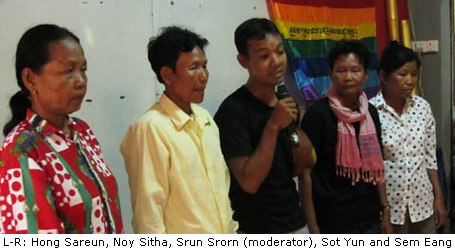The above picture is of four women flanking a man in the centre. The women – constituting two life-long couples – were about to share their life stories at a workshop in Phnom Penh recently with about 34 gay activists from Cambodia’s Asean neighbours in the room (and about 50-60 more Cambodians).
I was among them, and I’m almost sure most of the Asean (Association of South East Asian Nations) activists found it hard to see these women, hailing from the deep provinces of Cambodia, as “one of us”.
One of the things that modern gay movements tend not to discuss is the way we ourselves may hold class prejudices. Yet these prejudices arise all too easily from the origins of modern gay consciousness and its resulting discourse.
It’s like this: While homosexual orientation is as old as mammalian evolution, gay identity as a concept is relatively recent. The modern discourse, which is identity- and rights-based, also found its first flowering in urban capitals of Western countries. Coming to Asia, it is only to be expected that this kind of gay discourse first takes root among the middle-class, partly western-acculturated sections of our urban populations – thus the prevailing character of modern gay movements in Asian countries. The result is a stereotype of a “gay person” with precisely these characteristics, a stereotype that gay people themselves hold.

The stereotypical "gay look" -- Taiwan Pride 2009
When the Singapore contingent came upon the Cambodian lesbian community at the workshop, I think we gasped. “They look like rice farmers!” we said to ourselves, as if the thought had never occurred to us that farmers too could be gay. However, we had enough self-awareness to feel promptly embarrassed and were quick to admonish ourselves for our own classist reaction.
That said, the fact remained that they were not quite “gay” in the way we conceive of being gay. The couples modelled themselves very much on heterosexual lines, with one partner seeing herself as ‘husband’ and the other as ‘wife’. You could even tell from the way they dressed in the picture at top which ones were the husbands and which ones the wives. Even as they told their stories, only the husbands spoke. The wives just stood silently by their sides answering a question or two only when asked. The highly genderised roles they adopted are ones that same-sex couples, East and West (have you seen the film Albert Nobbs?) might have adopted for eons, but because it’s something rejected by modern gay sensibilities, it comes across as strange to us today.
Their concerns were probably different too, which I will illustrate with this incident:
It occurred on a different day, and right after the team from the Philippines (or was it Thailand?) made a presentation about their recent efforts to engage the media. There was much discussion about reporters’ use of loaded terms, about their choice of lurid and sensational stories and what it took to correct them. Discussion also centred on (in)visibility on television and media representation generally.
And then a Cambodian woman from the audience, looking not much different from the four in the photo above, raised her hand to ask a question: In your country (Philippines), do women-who-love-women find it hard to get jobs?
We were on totally different wavelengths!
It is very easy to laugh and somehow pigeonhole these women as simpletons with utterly parochial concerns, but that would be so, so wrong. Their life stories would prove how much fortitude they have in them, how enduring their love for each other has been, and how much adversity they’ve had to go through. No city-slicker has anything close to boast of.
* * * * *
Their stories in three parts
“We decided to adopt children,” said Sot Yun, as translated by Srun Srorn. “In 1981, we adopted my cousin’s baby daughter, and in 1987 and 1991 we were given two more babies (boys) anonymously – we don’t know who exactly their parents were.
“Today, the older two are married and have given us six grandchildren. Our youngest boy is now in university.”
The other couple, Noy Sitha and Hong Sareun, have raised eight children, all given to them by their brothers and sisters. But it’s not as if their siblings accepted their relationship readily. Quite the opposite: winning acceptance was a long struggle.
* * * * *
“And so we were separated,” said Noy Sitha, referring to the worst moments she had to endure in the late 1970s, in the last months of the Khmers Rouges terror. After the Khmers Rouges were overthrown, “I had to go from place to place to look for my wife.
“Eventually I found her with other members of her family, but that was only the start of a new set of problems.”
The family objected to the relationship and Hong Sareun’s father insisted on marrying his daughter off to a man. “He tried many times to force her to get married,” recalled Sitha, “but her mother could see that I work very hard, I do heavy work like a man. Eventually she began to see that I was born this way and can do a man’s job.”
However, the mother kept her thoughts to herself for many years, as the father’s pressure piled up.
“So I withdrew to a temple and left her [Hong Sareun].
“But Yoon [Hong Sareun] couldn’t bear the separation either. She did not eat, got sick and got weaker and weaker. She wanted to die, we both did. Eventually, the family allowed me back to take care of her.”
But still the pressure to marry heterosexually was applied. The couple tried running away to Battambang province, but with no money and no means of livelihood, that plan didn’t work either. Back home they came, except that this time, they went to their village chief to ask for support.
“I asked him to please give me a plot of land,” recalled Sitha. “However, he hesitated. ‘How can you stay as a couple?’ he asked.”
“I said to him: ‘If you give me land, I will do the things that need to be done, otherwise I will cut off my hand and give it to you.’ “
It took a long while, but eventually the chief relented and assigned them a plot. On it, they built their own house with their bare hands. Among other crops, they grew sugar cane. They had to cut the long, heavy stalks and carry them to market.
Gradually, the other members of the family came to visit as a sign of grudging acceptance, and one day, a brother sent his baby son to live with them. The boy has grown up – the first of eight children – and will be getting married soon.
Some time later, the village chief came by and offered to register them all as a family.
The other couple, Sot Yun and Sem Eang, went through a similar period of family objection through the 1980s. After the fall of the Khmer Rouge, their brothers and sisters, who had been scattered by the Khmer Rouge, came back to the village.
“My older brother tried to break us up,” Sot Yun said. “He insisted that I live with him, not with my wife.”
Sot Yun had to put her foot down. “I said to my brother, ‘If I go to live with you, you can’t get my whole body, just the bones.’ ” The reference was to the lifeless remains after cremation.
Faced with Sot Yun’s adamant stand, the brother relented, but the couple could not be sure when a new attempt to split them up might arise again. “So we decided to adopt children.”
* * * * *

Sot Yun had first met her future wife Sem Eang in 1976, when the Khmers Rouges were in control, terrorising the entire Cambodian population. Millions would die from starvation and mass executions during the four years of their rule. They had to keep their relationship secret at the risk of their lives.
Noy Sitha and Hong Sareun too met each other in 1976. “At the time, under the Khmers Rouges, men and women had to live separately, in gender-segregated houses,” Sitha explained. So while they could be together, “we could not let others notice us as a couple. We would be killed.”
Unfortunately, one day, a Khmer Rouge soldier saw an act of kindness between them and began to suspect an illicit relationship. “I was punished,” said Sitha, “by being made to dig a trench in double-quick time.
“If I didn’t complete the task, I would be killed.”
Clearly, she managed.
She was caught a second time and, for punishment, she had to cart away a small hill, all the while with nothing except leaves to eat. But this time, the soldiers sent Hong Sareun away while Sitha was being punished.
“And so we were separated.”
* * * * *
It’s been hard living together, both couples agreed. “But the only way is to understand each other and not pay too much attention to others who talk bad about us,” advised Sot Yun.
“We want people around us to stop discriminating against us,” said Noy Sitha. She pressed the point home that she could do everything a man can do, and that she and her wife have even raised a family. “Raising children is a big responsibility.”
Alex Au has been a gay activist and social commentator for over 15 years and is the co-founder of People Like Us, Singapore. Alex is the author of the well-known Yawning Bread website.

